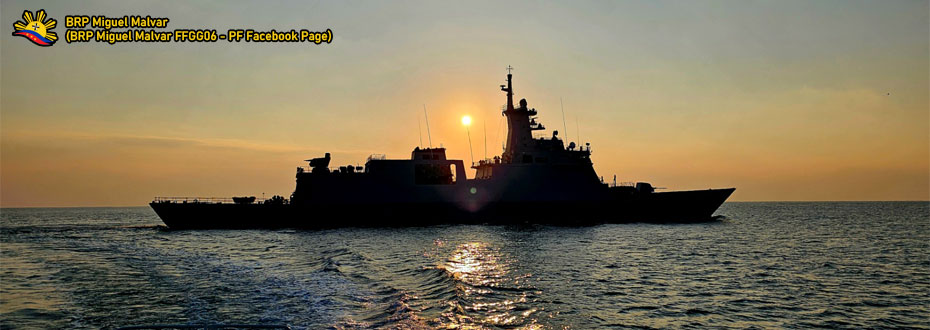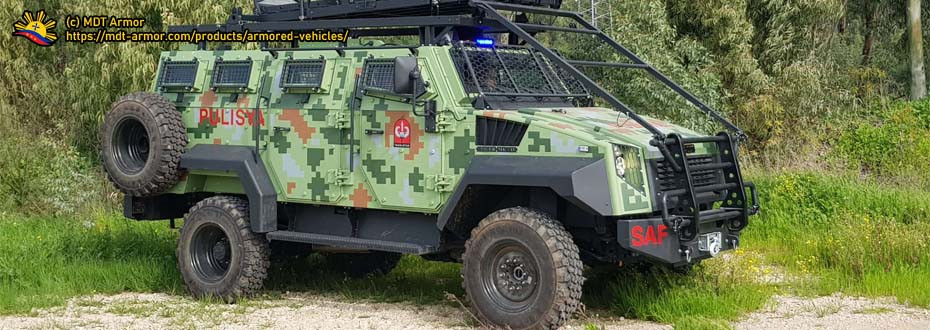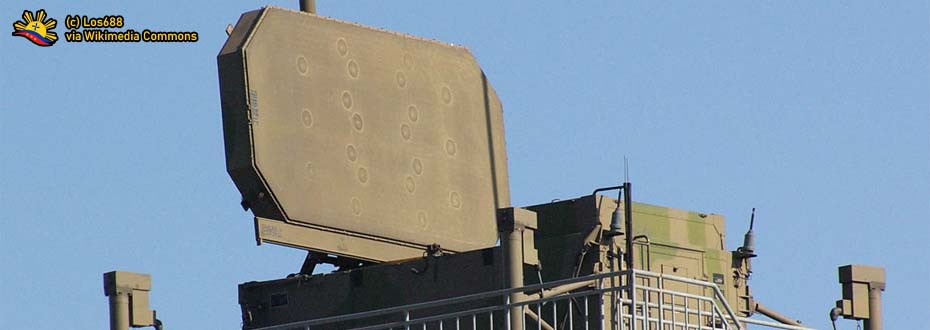The procurement process is a vital element and a crucial part of what defines a bureaucratic system of a country, of which it provides projects and programs to each government agencies it apply, whether it may be for education, healthcare, finance, infrastructure, or national defense.
And this is precisely the case for the Philippine government's current procurement system, whereby it received an overhaul. The question of how does this affect the direction of Philippine defense's own capacity building steps is something in need for an answer. And such an answer requires a comprehensive detail that explains its quirks further.
THE ENACTMENT OF THE LAW
 |
The New Government Procurement Act will give advantage to the Armed Forces of the Philippines' current modernization push.
Image Sources are from Lockheed Martin (top), HD Hyundai Heavy Industries (below), GPPB-TSO (middle). |
Through the years, the Philippine's national procurement system is usually getting governed by the provisions and standards set by the Government Procurement Reform Act of 2003, or better known as the Republic Act 9184.
This law is the baseline that provides the Armed Forces of the Philippines the military hardware it recently gained during the Horizon 1 and Horizon 2 phase of the Revised AFP Modernization Program, enabling most, if not all, the military acquisition projects discussed in this website.
Like any other law, the Government Procurement Reform Act also comes with its own set of Implementing Rules and Regulations or IRR, whereby it serve as a 'user manual' to each government agency available and at-large in terms of the mode of procurement available for each acquisition project of different amount and size presented. Before the new law gets presented, the Implementing Rules and regulations of the law follow the current 2016 revision, of which it got updated as of July 2023.
This new law shows a significant shift in the country's own procurement system, whereby all the gained knowledge under the Government Procurement Reform Act of 2003 will no longer get relevant in the upcoming years.
Also to point out is the Department of National Defense's desire to provide financial resources for the Revised AFP Modernization Program through other means, whereby arrangements with the private sector regarding this method get proposed by the defense secretary, aside from the likelihood of accepting soft loan arrangements with other countries that are also providing the military hardware, in the essence that it has the urgency at hand, while minimizing the financial burden of the government possible.
In this topic, the provisions and important details are important to delve and dissect on, especially with the modes of procurement that is open or welcoming to cater any future acquisition projects that the Armed Forces of the Philippines and other agencies like the Philippine Coast Guard have, especially with the ones currently pushed under the Revised AFP Modernization Program or equivalent, all of which aims to push as relative to the country's desire to strengthen national security.
The New Government Procurement Act unveils multiple options that have once that have nonexistent in the old 2003 Government Procurement Reform Act or the Republic Act 9184, especially in the specific technicalities and conditions in each procurement mode that satisfy the requirement. With this, the seventy-six pages of the law will unravel the details, with this article providing a specified breakdown that remains its relevance to the Philippine defense matters.
THE NEW PROVISIONS IN OVERVIEW
 |
| The title page of the law. |
Before providing a summarized and simplified glimpse of the law, a look at the newly enacted law's provisions in-detail is accessible in a link right here. The seventy-six paged enacted law provides a mix of similarly implied provisions as the original Government Procurement Reform Act or the Republic Act 9184, although it introduces some expanded conditions and interpretations, some of which are helpful for the Department of National Defense' push for the Revised AFP Modernization Program.
As with the original provisions under the 2003 version of the Philippine procurement law, the recently enacted law also has its own modes of procurement. For the Republic Act 12009, there are at least eleven (11) modes that include 'Competitive Bidding', 'Limited Source Bidding', 'Competitive Dialogue', 'Unsolicited Offer with Bid Matching', 'Small Value Procurement', and 'Negotiated Procurement', to name a few. It also has its own set of governing principles on the government procurement process.
On Article 2 of the New Government Procurement Act, the term 'Strategic Procurement Planning' appears, whereby the acquisition process needs to undertake and as quoted -"proper and sufficient planning and preparation to ensure sound procurement decisions".
This broadens the scope that has not mentioned in the article 2 of the original Government Procurement Reform Act of 2003, in which it only mentions as that procurement projects should only come within the approved budget of the entity.
The aforementioned article of the law has multiple sections that have come interesting, especially regarding to any future acquisition projects that the Armed Forces of the Philippines and other agencies such as the Philippine Coast Guard may partake. It deals with Market Scoping (Section 10) which is a prerequisite in crafting the end-user's Project Procurement Management Plan or PPMP, Multi-Year Contracting (Section 9) whereby it requires requesting of multi-year project financing from the Department of Budget and Management, among others.
Broadening scopes does not stop with Article 2, as the Article 4 on the Modes of Procurement also comes with expanded provisions and coverage, some of which will surely provide a sufficient benefit for the Armed Forces of the Philippines and the Department of National Defense, along with other agencies involving law enforcement agencies such as the Philippine National Police (PNP), the Philippine Coast Guard, the Bureau of Jail Management and Penology (BJMP), and the Bureau of Corrections (BuCor).
Ultimately, the functions of the Bids and Awards Committee (BAC), the Government Procurement Policy Board (GPPB), and other instrumentalities remain unchanged since the Republic Act 9184, although the terminology now changes from the "lowest calculated and most responsive bid" to "most economically advantageous responsive bid (MEARB)", suggesting that the metrics of a bidding process no longer has cost into consideration, but also the quality of the product of the goods presented.
Both Articles 2 and 4 have provided additional details that will help enhance any acquisition projects that the Armed Forces of the Philippines and the Philippine Coast Guard have in their respective modernization programs, whereby the details of it gets a further discussion in the upcoming subtopic, in which the following information presents a provision that helps improve the country's military capabilities without the need of hampering it given the rigid policies of the Republic Act 9184.
THE DEFENSE PROVISIONS UNDER NEGOTIATED PROCUREMENT
 |
Provisions in the negotiated bid allow the Department of National Defense to buy additional military hardware without the need of constantly undergoing the usual bid process, usually done under R.A. 9184.
Image of BrahMos Missile from Wikimedia Commons. |
Now that the key provisions at its overview have presented accordingly that gives perspective regarding the New Government Procurement Act or the Republic Act 12009, this portion will cover primarily the highlighted provisions that are likely affecting the future acquisition projects of the Armed Forces of the Philippines under its currently running Revised AFP Modernization Program. Apparently, the added provisions give opportunities for the Philippine military to secure its needs without undergoing the usual bidding process.
One of such highlights is the key provisions under the "Negotiated Procurement" or the Section 35 under the "Modes of Procurement" article, whereby it has a key component primarily focusing on the security aspects of the procurement as accomplished by the Department of National Defense, along with the possibility of acquiring additional military hardware from the country's traditional suppliers like Israel, Turkey, Indonesia, and South Kora, without the need of undergoing the procurement process.
This refers to the Condition H of the Negotiated Procurement portion, whereby it states that and has quoted:
Defense Cooperation Agreements and Inventory-based Items. The Secretary of National Defense may directly negotiate with an agency or instrumentality of another country with which the Philippines has entered into a defense cooperation agreement or otherwise maintains diplomatic relations when the procurement involves major defense or materiel and/or defense-related consultancy services...
This condition also has several factors that will satisfy of applying this condition for negotiated procurement applicable for the Armed Forces of the Philippines' ongoing modernization phase, especially with these factors, or sub-conditions at this manner, comes satisfiable as it comes with the interest of the country's national security at mind, ensuring that the Philippine military secures the military hardware it deserves to have under the Re-Horizoned 3 phase, and as envisioned under the Comprehensive Archipelagic Defense Concept or CADC.
The first three conditions have presented after the first quoted portion, as mentioned, with the following words come accordingly:
1. The Secretary of National Defense has deemed it necessary in order to protect the interest of the country;
2. The expertise or capability required is not totally available; and
3. The defense equipment or materiel and or defense-related consultancy services to be procured under this modality is included in the Armed Forces of the Philippines Modernization Program previously approved by the President of the Philippines.
This provision does not end with the first three conditions, as it has three additional conditions that need to satisfy, should the Secretary of National Defense, under the interest of the country's national security, decide to conduct a direct negotiation with a supplier or manufacturer in procuring inventory-based items, pertaining to major defense equipment or materiel. The three conditions that need satisfaction for this option are coming with the following words:
1. Direct negotiation will address compatibility, interoperability, and sustainability;
2. The supplier or manufacturer has fully and satisfactorily implemented a contract of the same item with the Department of National Defense (DND), any of its bureaus or attached agencies, or law enforcement agencies; and
3. The supplier or manufacturer shall provide a performance security with this act.
Condition 'H' of the Negotiated Procurement ends with a provision, saying that law enforcement agencies like the Philippine National Police (PNP) and its sub-units like the Maritime Group and Aviation Security Group, Philippine Drug Enforcement Agency or PDEA, Bureau of Immigration or BI, Office of Transportation Security or OTS, Bureau of Fire Protection or BFP, National Bureau of Investigation or NBI, Presidential Security Group or PSG, National Police Commission or NAPOLCOM, Bureau of Jail and Management or BJMP, and the Bureau of Corrections or BuCor, can also avail this specific condition for their respective procurement processes.
PROVISIONS ON DOMESTIC AND FOREIGN PROCUREMENT
 |
| Philippine Navy's Multipurpose Attack Crafts or MPACs are actually Philippine-made products made by Propmech. |
Aside from the emphasized provisions on the Negotiated Procurement with preconditions interrelated to the ongoing push of the Revised AFP Modernization Program, its Re-Horizon 3 phase, and the Department of National Defense' Comprehensive Archipelagic Defense Concept or CADC, there is this provision that might correlate to any future defense-related acquisition projects, particularly pointing to the country's Self Reliance Defense Posture or SRDP.
This points to the Article XIII of the New Government Procurement Act or NGPA, entitled as the "Domestic and Foreign Procurement". From here, it emphasizes the preference for domestic suppliers, subject to the provisions presented under Republic Act 11981 or the "Proudly Filipino" Act.
This means that any defense company that partners with a local entity, or a defense industrial entity that sets up shop in the country, has an advantage in offering military wares as compared to foreign-supplied ones.
While there is a preference for domestic suppliers, there are still conditions that needs to satisfy before getting into the conclusion of choosing such supplier to provide the goods and services, especially the needed military hardware for the Armed Forces of the Philippines and other relevant agencies like the Philippine Coast Guard to use. This points to the condition that such Philippine-made products have the guarantee on localized supply chains, ranging from raw materials to spare parts and others.
Even though this provides some good news for local suppliers and aspiring investors that want to take part in setting up production facilities in the country for military hardware, foreign-built equipment may still get a chance for consideration, especially when the expertise or the maturity of the industry within the country comes insufficient. In that case, it provides foreign military suppliers a chance to take part in the procurement process through multiple means, eventually securing the portion of the Philippine defense market.
For context, the Philippine Navy has several locally made vessels that are still currently serving its fleet, one of which is the Multipurpose Attack Crafts or MPACs (see the image above). Produced by Propmech, a local company, the Multipurpose Attack Crafts played a crucial role not only to provide sufficient troop deployment that augments the country's key amphibious vessels like the Tarlac-class Landing Platform Docks, but it serves as an effective littoral water vessel that protects the country's key waterways.
With the examples provided above, it promotes the idea of supporting the local defense industry of the Philippines regarding the contract awarding and signing, whereby it will bolster not only the locally established defense companies but also encourage foreign companies like HD Hyundai Heavy Industries setting up shipbuilding capability in Subic Bay to set up shop in the country, providing additional jobs to the local Filipino citizenry while boosting the local defense industry and economy.
THE STRATEGIC PROCUREMENT PLANNING AND THE PROVISIONS REGARDING BOTH SECOND-HAND AND SOFT LOAN ARRANGEMENTS
 |
Soft loans and ODA arrangements are also part and covered under the New Government Procurement Act.
(c) Binmei YouTube, via image source. |
This refers to one key provision in the newly enacted New Government Procurement Act or the Republic Act 12009, whereby this article now comes with soft loan arrangements and other credit line arrangements into consideration, in which it might benefit any procurement plans and programs that are related to the ongoing modernization push not only of the Armed Forces of the Philippines but also with other security agencies such as the Philippine Coast Guard.
For context, the Philippine Coast Guard receives a significant increase in the number of white-hulled offshore patrol vessels and multirole response vessels in recent history at the time this article has published, all thanks to soft loan and similarly arranged financing schemes from countries like Japan and France, enabling the maritime law enforcement agency to secure and operate large vessels such as the Teresa Magbanua-class Multirole Response Vessels (MRRVs, see image above) with plans of getting 5 more.
Provisions dealing with 'Official Development Assistance' scheme primarily deals with subcontracting arrangements, whereby specific provisionary rules compel the bidder or general contractor to disclose or provide additional information of its subcontractors during the bid process, plus another rule that enables the general contractor or bidder to take utmost responsibility on any actions of the subcontractors in terms of negligence or delay in the delivery of contracted goods and services.
Strategic Procurement Planning does not stop in providing governing rules in dealing with soft loan and similarly crafted schemes, but also with the Multi-Year Contracting scheme that provides an avenue of funding security in case a project will take the duration of above one year for the accomplishment of a project to take place. This is clearly the case for big-ticket project arrangements of the Revised AFP Modernization Program, whereby MYCA payments have made through project milestones.
Upon delving deeper with Article II of the New Government Procurement Act on Strategic Procurement Planning, another provision under this portion deals with contract performance monitoring highlights one most important aspect that will benefit the Armed Forces of the Philippines and its ongoing modernization, which the following deals primarily on securing second-hand equipment, refurbished, and reconditioned goods that is common on military defense materiel.
To guarantee the usefulness throughout the whole lifecycle of goods to be procured, the Procuring Entity shall ensure that goods to be procured are brand new: Provided, That the procurement of second-hand, refurbished, or reconditioned goods such as military, defense, or law enforcement equipment or materiel, may be considered to secure a contract that is most advantageous to the government subject to the guidelines to be issued by the DBM and subject to compliance with relevant criteria, such as durability, remaining useful life, sustainability, maintenance cost, and warranty.
The provision mentioned is from Article II Section 7 of the Republic Act 12009, of which the subcontractor conditions for soft loan arrangements also belonged to. From the law's standpoint, it enables the Armed Forces of the Philippines to secure any second-hand military hardware through this option that was once nonexistent to the original Republic Act 9184. Also, it presents with safeguards that ensure that the second-hand military hardware that the Philippine military secures are still in excellent condition.
IMPLICATIONS
 |
Second-hand military hardware, provided that it is in excellent condition, likely has a chance for consideration under the Philippines' new procurement law.
Image Source. |
Countries that have improved bilateral defense relationships with the Philippines, particularly the ones that have forged a memorandum of understanding for defense-related materiel and sale of military equipment, are the ones that have likely benefited to this arrangement under the New Government Procurement Act, as it does no longer require undertaking a bidding process when the sale of military hardware can get accomplished through the special defense provisions under Negotiated Procurement.
For one, it is now possible for the sale of used military hardware or the ones secured under Excess Defense Articles like the F-16 fighter aircraft of previous variants, provided that it satisfactorily complies and adheres to the most economically advantages to the interest of the national government and the country's national security at-large. Also, the Foreign Military Financing recently pushed by the United States government will come to its advantage upon its application alongside the new procurement law.
This means that there has an increased sense of flexibility for the procurement planning within the Armed Forces of the Philippines, the Department of National Defense, and also other government agencies, into getting the best-for-buck acquisition project that ensures that the goods offered will come at the best interest of the Philippine government and the welfare of the people in terms of quality goods and services offered at a better price point.
Another plus point on this push is the foreign defense companies' desire to invest in the country in both direct and indirect means, whereby the preferential treatment of locally produced, proudly Filipino made products comes at an advantage for companies that has facilities in the country, along with the benefit of generating more jobs for the locals to make livelihood and eventually cascading the progress to the country's economy. DND's Government Arsenal Defense Industry Estate or GADIE tried to achieve this goal.
This means that the aforementioned defense firms might simply get a new contract under the Negotiated Procurement provisions of the New Government Procurement Law or the Republic Act 12009, whereby any plans for adding more units of existing military equipment and materiel such as for added Miguel Malvar-class Frigates or added VBTP-MR Guarani Armored Personnel Carriers, for example, may likely get quicker finalization and implementation as compared to the provisions under the Republic Act 9184.
With the flexibility in the procurement process provided for the Department of National Defense and the Armed Forces of the Philippines to use to its advantage, along with the support it received for the ongoing modernization program from both local budgeting and foreign soft loan arrangements like the one recently pushed by the United States, the Philippine defense capabilities at-large, including the ones in the Philippine Coast Guard, might likely reap the benefits at this enhancement in the upcoming years.
LOOKING FORWARD...
 |
Adding more units without undergoing a new bid process for military hardware is one of the greatest benefits provided by the New Government Procurement Act to Philippine defense.
Image screen grab from HD Hyundai Heavy Industries. |
From the enactment of the law, it will be now the responsibility of the Government Procurement Policy Board or GPPB to craft its Implementing Rules and Regulations, of which it is in their mandate to get it accomplished within one-hundred eighty days (180 days) from the day that the law got enacted. From this point on, government agencies may still use the provisions under the Government Procurement Reform Act or the Republic Act 9184, until a transition ensues and this new law becomes mainstream.
Upon its full implementation, the Department of National Defense and the Armed Forces of the Philippines is likely to get benefit from the new provisions of this law, specifically the ones pointing to the strategic planning regarding the purchase of second-hand military hardware of still excellent condition, along with negotiated procurement arrangements that enable end-users to secure additional military hardware without the need of undertaking new bid process again.
Another thing to point out is that in the usual bidding process for military hardware, the New Government Procurement Law or the Republic Act 12009 not only encourages the agency's bids and awards committee to get the most economically advantages and responsive bid, but also with locally Filipino-produced and built products being as a preferable option that encourages not only for the pursuing of the country's Self Reliance Defense Posture or SRDF, but also for foreign companies to invest locally.
As the Revised AFP Modernization Program now receives a whopping Php 2 Trillion Pesos (or at least US$35 Billion) defense package under the Re-Horizon 3 push, the New Government Procurement Act will help put this investment into its full advantage, whereby each of the military service branches of the military and other agencies like the Philippine Coast Guard can secure its purchase of high quality and fully sophisticated military hardware, justifiably and economically benefiting the government.
This is not to mention the pledges and commitments from other governments that will help support the Revised AFP Modernization Program like the United States of America's US$500 Million Foreign Military Financing scheme, along with the current bilateral and multilateral exercises the Philippine military have with like-minded nations to-date like Canada, Australia, and Japan, helps improve the capacity building that each of the Philippine military's service branch needs for external defense.
With all the aforementioned mechanisms, pledges, and enactment of necessary laws at play, it comes with certainty that the future is bright for the Armed Forces of the Philippines and its ongoing pursuit to have a credible defense force capable of providing the needed deterrence for the country to push, ensuring and safeguarding the sovereignty and national interest of the country's territory, and citizenry. All of which gives an assurance for the Philippines' desire for peace, security, and freedom.
In this ending note, it is a welcoming development on the enactment and eventually the enforcement of the New Government Procurement Act or the Republic Act 12009 that serve as the new guided principle for government agencies to use for their respective operational and mandated requirements, ensuring not only for the Armed Forces of the Philippines to get the tools it deserve for national defense, but also for other government instrumentalities to give quality service for the citizenry to benefit.



























.png)



